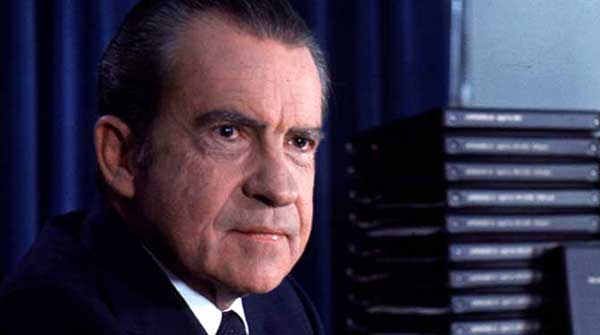 In the summer of 1971, Richard Nixon demonstrated how his charismatic deficiencies didn’t preclude daring moves. His detractors were taken by surprise.
In the summer of 1971, Richard Nixon demonstrated how his charismatic deficiencies didn’t preclude daring moves. His detractors were taken by surprise.
Nixon was in the third year of his first U.S. presidential term and he came into that summer on the back foot.
The inherited Vietnam War was grinding on and the policy of gradual disengagement wasn’t getting much sympathy from his political and media opponents. Nobody was ever going to cut Nixon any slack.
And the June legal battle over what was dubbed the Pentagon Papers didn’t help. Although the revelations implicated his predecessors, not him, Nixon was talked into a losing attempt to suppress publication. It was a mistake.
But the dynamic changed on July 15 when Nixon went on national television to announce that he’d be visiting China the following year. It was both a bombshell and a geopolitical game changer.
Since the communist dictatorship came to power in 1949, American policy towards China had focused on keeping it isolated. China was deemed aggressive and a potential threat to peace – and American interests – in Asia. Remembering the lessons from Europe in the 1930s, China would be kept in a box.
Nixon’s change of heart had been germinating for a while.
While out of government in the early 1960s, he’d travelled extensively and met privately with the likes of French politician Charles de Gaulle and German statesman Konrad Adenauer. These were men he deeply respected and they’d counselled him on the value of opening a relationship with China.
It would serve two purposes.
One was acknowledging that a country of China’s size couldn’t be ignored indefinitely. It wouldn’t be a matter of bestowing approval but rather of recognizing reality.
The other was the prospect of using China as a counterweight against the Soviet Union. This was old-fashioned balance-of-power diplomacy. Cynical perhaps, but that’s how the world worked.
Nixon, ever the realist, could relate to this. So he penned a 1967 article for the magazine Foreign Affairs, telegraphing his evolving views. However, it was still a year before he’d be elected president and not much attention was paid. Hence the shock in July 1971.
Economics – neither Nixon’s strong suit nor an area of much interest to him – provided the other opportunity.
As the 1960s wound down, it became increasingly obvious that the game was changing. The post-Second World War economic era was morphing uncomfortably into something else.
The American auto industry, once considered impregnable, was under pressure from Japanese imports. Trade deficits threatened to become a permanent feature.
The Yankee dollar – the world’s primary reserve currency and the symbol of American economic pre-eminence – was starting to look vulnerable. Foreign governments were increasingly redeeming their dollars for gold at the promised rate of $35 per ounce.
And the macroeconomic tools used to manage the economy began to sputter. This had the effect of undermining the idea that smart technocrats knew the levers to pull and the buttons to push.
Take, for instance, the Phillips curve.
Named after the economist who published a ground-breaking study in 1958, William Phillips, the curve purported to describe a reliable inverse relationship between inflation and unemployment. Higher inflation was associated with lower unemployment and vice versa.
For economists and the politicians who relied on them for advice, this was a promising insight. The Phillips curve would allow public policy to make a reasonably precise trade-off. If unemployment was too high, inflation could be dialed-up a bit in order to bring unemployment down to the target level. And, if necessary, the opposite choice could be made.
Then it went wrong.
Inexplicably, inflation and unemployment rose together, culminating in the coining of a new term – stagflation. It was to be a very unpleasant condition.
Nixon was determined not to head into the 1972 campaign in a recession. He’d do whatever was necessary. He’d be seen as a man of action, someone taking charge.
So on Aug. 15, 1971, he delivered his second shock of the summer.
There’d be a temporary wage and price freeze; the gold window would be closed, meaning the U.S. would no longer give you gold for your dollars; and there’d be a 10 per cent tax on imports.
Closing the gold window effectively converted the American dollar into a floating currency, which was beneficial. Otherwise, the policy is generally viewed as a longer-term failure.
But Nixon got re-elected in a landslide.
Troy Media columnist Pat Murphy casts a history buff’s eye at the goings-on in our world. Never cynical – well, perhaps a little bit. For interview requests, click here.
The views, opinions and positions expressed by columnists and contributors are the authors’ alone. They do not inherently or expressly reflect the views, opinions and/or positions of our publication.
© Troy Media
Troy Media is an editorial content provider to media outlets and its own hosted community news outlets across Canada.



